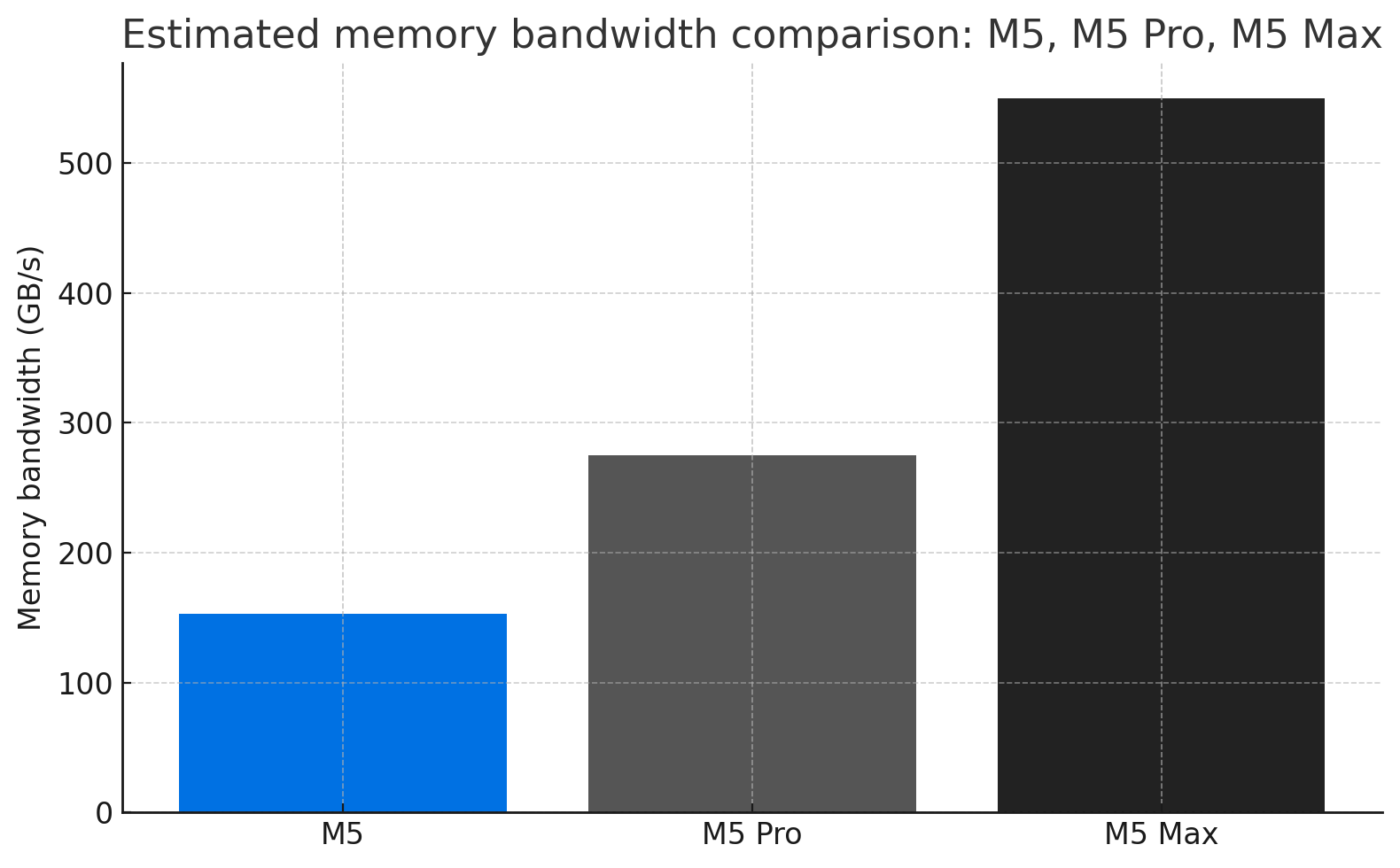The true pro tax: M5 Pro vs. M5 Max - why that extra 275GB/s of memory bandwidth is worth thousands of dollars for video and AI workflows
Apple hasn't announced the chips yet - but we have an idea of what to expect

- Memory bandwidth defines real performance for professionals handling intensive workloads
- Future M5 Pro and M5 Max chips could double throughput for creative pros
- Extra 275GB/s bandwidth could save professionals both time and money
For professional users, one metric often defines whether a chip truly meets the demands of their work: memory bandwidth.
Apple’s recently-announced M5 is the foundation of a new 14-inch MacBook Pro and iPad Pro (and an updated Apple Vision Pro) and as part of my series looking at Apple silicon, I thought it could be interesting to take a glimpse into a possible future.
Apple hasn’t announced or even hinted at M5 Pro and M5 Max variants of its new chip, and if they do arrive it likely won’t be for a good year or so. Even so, it’s possible to take some educated guesses as to what these versions might offer professionals.

This article is the fourth in a five-part series delving deep into Apple’s M-class processors, from the early M1 through to the newly announced M5 and our projected M5 Ultra. Each piece will explore how Apple’s silicon has evolved in architecture, performance, and design philosophy, and what those changes might mean for the company’s future hardware.
M5 Pro and Max
We asked Google Gemini to look at Apple’s previous M chips and model what we could expect from an M5 Pro and M5 Max.
Its predictions suggest the same core architecture could scale up sharply in throughput, a factor that shapes performance in ways raw CPU or GPU figures often fail to capture.
The base M5 already raises unified memory bandwidth to 153GB/s, nearly 30 percent above its predecessor. For most users, that leap delivers faster app response and smoother multitasking.
For workloads driven by data movement, such as editing multi-stream 8K footage, training small-scale AI models, or rendering in high-resolution 3D, this number is far more than a specification.
Sign up to the TechRadar Pro newsletter to get all the top news, opinion, features and guidance your business needs to succeed!
It defines how efficiently the processor feeds data to its compute units without waiting on memory.
Gemini’s modeling points to an M5 Pro operating at around 275GB/s and an M5 Max potentially doubling that figure to 550GB/s.
While these chips obviously don’t exist yet, the projections illustrate Apple’s likely path for professional-class performance.
The M5 Max would, essentially, double the width of its memory interface, allowing apps that rely on real-time asset loading or large tensor operations to run at full speed without cache bottlenecks.
The extra bandwidth could translate directly into time saved on renders and exports for video editors, and shorten training runs and make larger on-device models practical for AI developers, reducing reliance on cloud compute.
Over months of production, that time saving and avoided cloud costs could potentially mount up.
This focus on throughput rather than peak clock speed reflects a wider trend in chip design.
As compute units grow more capable, memory systems need to scale in parallel to prevent underutilization.
Assuming it follows this pattern, the M5 Max would not only be faster but also more efficient at sustaining peak workloads over extended sessions.
If these projections hold, Apple’s next professional tier could deliver a tangible advantage for users who depend on continuous, high-bandwidth processing.
In professional computing, memory speed remains the quiet measure that defines real-world performance.

Follow TechRadar on Google News and add us as a preferred source to get our expert news, reviews, and opinion in your feeds. Make sure to click the Follow button!
And of course you can also follow TechRadar on TikTok for news, reviews, unboxings in video form, and get regular updates from us on WhatsApp too.

Wayne Williams is a freelancer writing news for TechRadar Pro. He has been writing about computers, technology, and the web for 30 years. In that time he wrote for most of the UK’s PC magazines, and launched, edited and published a number of them too.
You must confirm your public display name before commenting
Please logout and then login again, you will then be prompted to enter your display name.